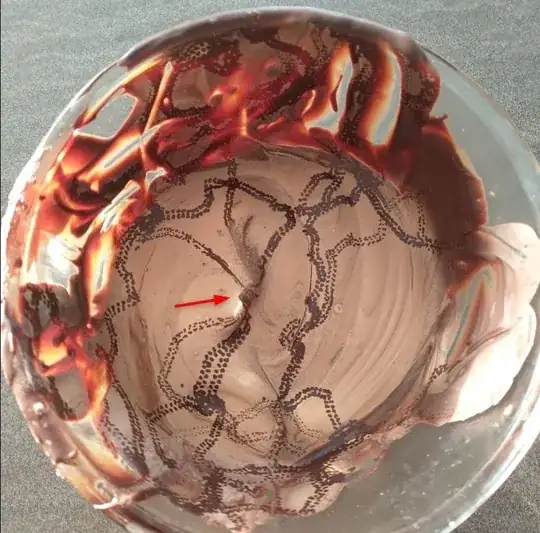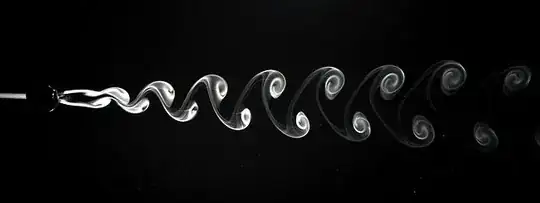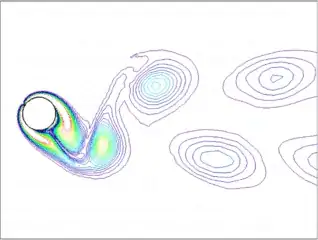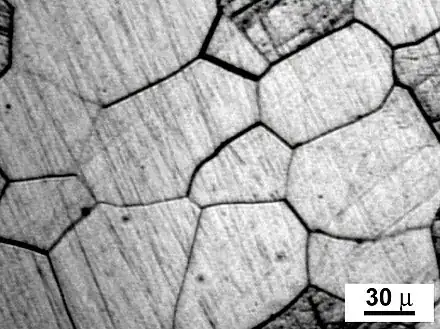Observation
I have melted some chocolate (in a bain-marie, or water-bath) in a bowl, and then turned off the stove. I let the hot and liquid chocolate stand there, letting it cool for a few hours at room temperature. Then (it was solid, albeit not very hard) I covered it with aluminium foil, and put it in the fridge (ca $6^\circ\,\mathrm{C}$). When I took it out the next day, I saw those patterns that look like tiny footprints. Each "track" was about $2$-$4\,\mathrm{mm}$ wide. The arrow indicates where I pulled out the spoon, which left a little cusp. Note how the "footprints" converge there. The bowl is about $15\,\mathrm{cm}$ in diameter.
Possible causes that are unlikely
Insect Footprints. Even though it looks a lot like it, I think that insect footprints are an unlikely cause, though, for the following reasons:
- It's deep winter where I live, and there has not been any fly or similar large insect in my flat for months.
- The patterns were not visible before I put the chocolate in the fridge, and it's even more unlikely that an insect lives inside the fridge at those low temperatures (most insects lose the ability to move, and eventually die).
- Other people have observed the exact same phenomenon, see [1](https://www.gutefrage.net/frage/hilfe-sind-das-tierspuren) and [2]. In 1, a pastry chef claims that he has seen this before, and that he rules out insects.
But I cannot be $100\,\%$ sure, since I have not watched it all the time.
Droplets falling from the aluminium foil. Since the foil has inevitable crinkles, a possibility would be that small droplets would fall from those crinkles onto the chocolate, causing regular patterns. However, this would not explain why there always are two parallel rows of droplets (which also appear in very regular "step-widths").
Question
What causes those patterns? Based on my considerations so far, I am inclined to think that this is a Physics phenomenon, which has to do with how chocolate solidifies, or how the "dew" on the surface forms. However, I am aware that most times when people report patterns on the surface of cooled-down chocolate it looks more crystalline, for example here, and that this looks nothing like it. Overall, I am very unsure about where to place this.
Comment: This is not a cooking-related question - it is to understand which physical processes produce such patterns in a substance like chocolate.



